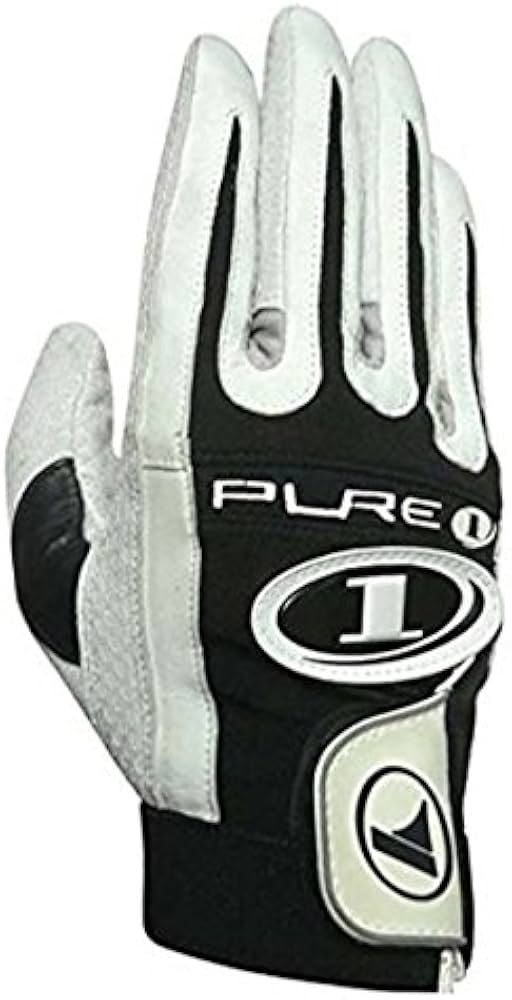Racquetball Gloves Buying Guide

Although not strictly required, most people prefer to use a glove when playing racquetball. And for a good reason. Wearing a glove really improves the grip you have on your racquet, which improves control. It also prevents slippage, once you start to sweat and the racquet handle becomes wet. So it is highly advisable that you invest in several high quality gloves. It is a very affordable way to improve your game and your comfort during playing. And the reason I advise to get several of them is so you can switch them out after one or two games. Gloves get destroyed due to friction and sweat. So by switching them frequently you can prolong the lifespan of your gloves by not putting all the strain on the same glove and by allowing them to dry out. That’s the reason why people who play regularly have a dozen gloves hanging of their glove line on their bag.
First thing you need to figure out is the proper size for your glove. The actual size of course depends on the size of your hands. However, one piece of advice I can give when it comes to size is to try and fit into the smallest size you can get in. It might feel a little uncomfortable at first. But gloves do stretch out after a while and if your glove is snug, you will have much better control. Otherwise, a glove that is a little too big will lead to bunching or slight material movement which will throw off your precision. So when trying gloves on, if it takes some force to squeeze into it and your fingers go all the way to the end, that’s the size that you want.
When choosing racquetball gloves, here are the things you can consider when comparing different choices:
Durability – more expensive gloves tend to last longer than cheaper ones. Especially when they are made out of sheepskin leather. So a 20 dollar glove might last longer than three 10 dollar ones. At the same time, all manufacturers have bad batches from time to time, so this can’t be taken for granted.
Breathability – typically, mesh backing allows for more airflow, but this comes at the cost of lower absorption, padding, and fit. Conversely, something like lycra or neoprene provides less airflow, but absorption and fit is much better.
Stickiness – something like tackified leather provides maximum stickiness, so there’s no slippage. However, it also gets in the way of switching between your forehand and backhand grip. So synthetic leather, although not as sticky, can feel much better. It allows you to switch much easier between grips, yet still provide enough stickiness to feel like you are in control of your racquet.
Padding – if you tend to dive a lot, then getting a glove with foam padding is a good idea. But this comes at the cost of breathability and it adds weight to your glove and makes it feel very bulky.
Cost – racquetball gloves tend to fall into the $8 to $20 range. As I mentioned with durability, more expensive gloves tend to last longer. But it might be a good idea to try out a bunch of cheaper ones to see what features you like. Plus, it’s better to switch gloves after every game, so given a choice, it’s better to have several cheaper ones, than a single expensive glove.
I have tried over a dozen different gloves in all my years playing racquetball, so here are my personal thoughts on some of them:
| ProKennex Pure 1 Racquetball Glove – This is my favorite glove and one I would highly recommend to anyone. It is made out of high quality pittards sheepskin leather. Gripping is great. Lycra backing provides good breathability. I’ve had good luck with the quality and these tend to last almost as long as Gearbox movement. | |
| Gearbox Movement Racquetball Glove – This is my second favorite glove. It is also made out of high quality pittards sheepskin. This glove is a bit thicker than most others which makes it the most durable one in my experience. Suede fingers make it pretty comfy and neoprene backing helps with a snug fit. My only gripe with it is that it feels really weird when paired with a synthetic leather grip. I just feel like the racquet moves in my hand slightly, which throws me off. However, when paired with rubber grips, it feels great. | |
| HEAD Web Racquetball Glove – Features an interesting silicon web palm pattern that increases the grip. Microfiber mesh backing provides great breathability. I always thought this was a great glove, until I tried the two above. Now whenever I run out of those and have to put this one on, I feel a pretty big difference. Still, this glove served me well as a beginner and it’s a bit cheaper. It gets wet from sweat pretty quickly, so should definitely be changed after each game. | |
| HEAD Renegade Racquetball Glove – Very similar to Head Web, minus the silicon web palm pattern. It’s a little cheaper than Head Web, but I actually came to like it more. It just feels a bit more inline with my favorite gloves. |
One final tip I can offer is to buy a few plastic glove shapers. They only cost a few dollars, but using them can significantly prolong the lifespan of your gloves. Whenever you get home from the gym, just stick them inside of your wet gloves which will enable them to dry much quicker.
